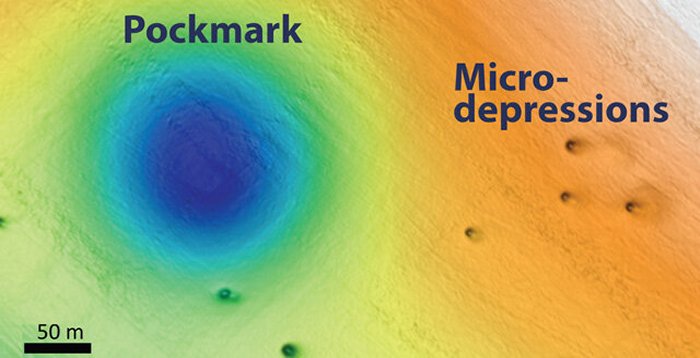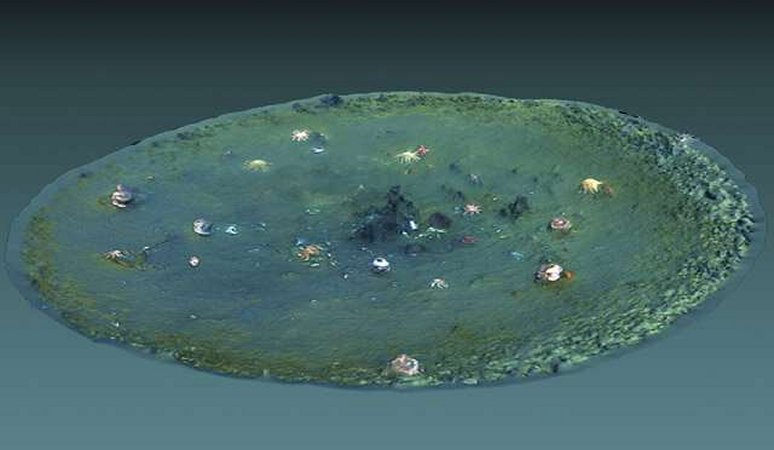Eddie Gonzales Jr. – MessageToEagle.com – During a recent survey of the deep seafloor off Big Sur, MBARI researchers discovered thousands of mysterious holes or pits in the seafloor.
Scientists found two different sizes of holes. The larger ones, known as pockmarks, average 175 meters (almost 600 feet) across and five meters (16 feet) deep, and are nearly circular and fairly evenly spaced.
Now, researchers want to understand how these pits formed because this area is the site of a proposed wind-energy farm.

Seafloor map showing pockmark and micro-depressions in the seafloor off Big Sur. Image. Credit: MBARI
Seafloor pockmarks have been found elsewhere around the world, and have been associated with releases of methane gas or other fluids from the seafloor.
Such methane releases could potentially cause the seafloor to be unstable, which could pose risks for structures such as offshore oil platforms or wind turbines.
However MBARI researchers found no evidence of methane in the sediment or seawater in this region. In fact, sonar data showing layers of seafloor sediments suggest that these pockmarks have been inactive for the last 50,000 years.

Computer-generated 3-D view of a micro-depression. Credit: MBARI
In contrast to the pockmarks, the micro-depressions formed in relatively young sediment. In addition, almost all of the micro-depressions contain objects such as rocks, kelp holdfasts, bones, trash, or fishing gear. Many micro-depressions also have “tails” of sediment that probably originated within the depression. In many areas, these tails are all oriented in the same direction.
Based on these observations, the researchers hypothesize that the micro-depressions are relatively recent features that were were excavated by local seafloor currents. Because the sediment on the seafloor in this area is so soft and “fluffy,” the researchers speculate that even the movements of fish hiding out in the micro-depressions could stir up the sediment, allowing it to be carried away by currents.
Map showing the locations of some of the pockmarks and proposed wind-farm areas off Central California. Credit: MBARI
“The pockmarks and micro-depressions in this area are both holes in the seafloor that occur in softer sediments, but they are morphologically distinct.
Scientist Eve Lundsten said, “the cause and persistence of the pockmarks still remains a mystery, but we find no evidence they were created from gas or fluid in the seafloor in the recent past.”
“The micro-depressions are recently formed erosional features; they are not ‘incipient pockmarks.’ Overall, a lot more work needs to be done to understand how all these features were formed, and this work is in progress,” she added.
Written by Eddie Gonzales Jr. – MessageToEagle.com Staff






